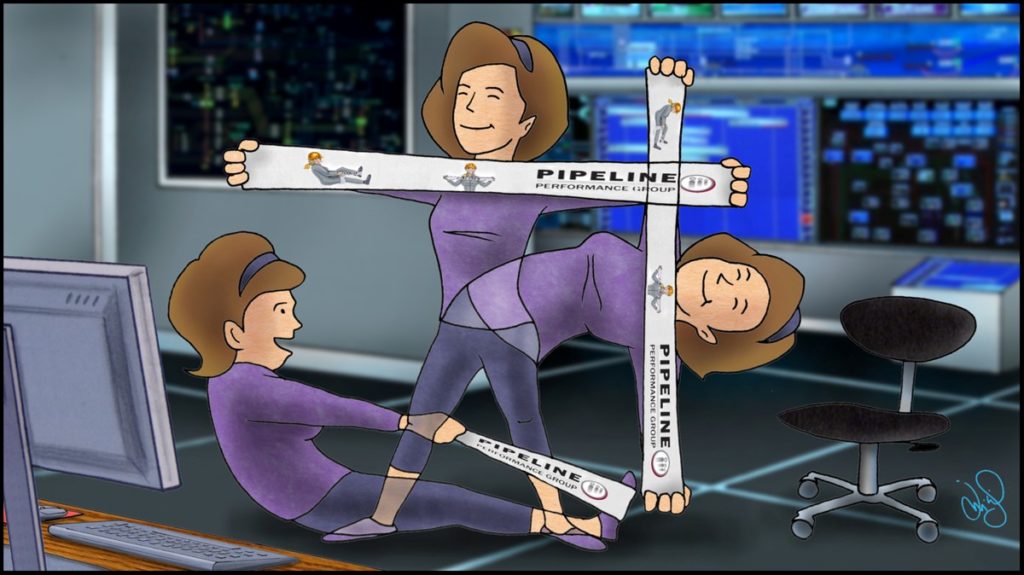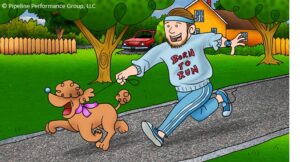Judy Riggs, an organizational development expert, taught me how to be a consultant. When I complained about some person or group who did not want to do what I wanted them to do, she would say, “Resistance is our friend. You need to take a different approach or develop a better plan to use on this project.” While I did not initially believe resistance was my friend, it did force me to improve my planning and communication skills.
A few months ago, I got short of breath almost every time I climbed stairs. That was an indicator that my obese, out of shape body was experiencing resistance. It certainly did not feel like this was my friend. But I started (for the thousandth time) walking again on an inclined treadmill and outdoors on hilly surfaces. I am doing better now. The resistance forced me to choose whether to stop climbing stairs or get in better shape so I could climb stairs without discomfort. Only I could make that choice.
Resistance training can be our friend. “Resistance training is any exercise that causes the muscles to contract against an external resistance with the expectation of increases in strength, tone, mass, and/or endurance.” http://www.emedicinehealth.com/
We provide “Alertness Exercise” cards and resistance bands so that people in control rooms can do resistance training or other light exercises during shifts. Since most of the work we do is mental and sedentary, it is good to get up and stretch or walk around or do some simple exercises a few times during the work period. Our goal is not to provide a complete exercise program, but to provide a fatigue countermeasure that anyone can do to mitigate the effects of fatigue. It is your choice?
Scarlet Knight, in the new Pipeline Performance Group book Health and Fitness for Shiftworkers, provides useful information about resistance training and exercise:
Strength, or resistance, training increases muscle mass. Muscle is highly metabolic tissue.
The more muscle you possess, the more calories you burn in an hour, even at rest. Muscle tissue is lost through degeneration as we age. By the time you celebrate your 30th birthday, your body is losing about one half pound of lean muscle tissue a year. Unless you are intentional about building muscle tissue, that loss accelerates with age, especially if you live
a sedentary lifestyle.
Resistance training also serves to build bone density, protecting the body from osteoporosis. Research suggests that exercise works better than calcium to build strong bones. Strength training helps improve posture. Strong muscles give better support for joints, reducing your risk of injury. Through weight training you will improve your balance and core strength.
One of the most appealing affects of weight training is the youthful appearance developed by building shapely muscles. What a great side effect! Another important component that must not be overlooked while building a sturdy frame is maintaining or developing flexibility. As you exercise, muscle tissue swells with blood and fluids. It’s imperative to cool down with slower walking followed by stretching to prevent pooling of this fluid in your joints. Stretching also serves to keep muscle tissue pliable as it builds in density and strength, protecting connecting joints.
If your job keeps you posted at a desk for long periods of time, get up and move through a range of motions that stretch the major muscle groups. March in place for a minute. This will increase blood flow bringing a refreshing wave of oxygen and nutrients to your brain and muscles. Set your phone to ping at the top of the hour, reminding you it’s time for a stretch break. Even sixty seconds of movement per hour makes a big contribution toward reversing the negative effects of a sedentary lifestyle.
It is difficult to make positive changes. Escape from inertia and take small steps to make improvements in your exercise habits and other areas of life. Remember, “Resistance is our friend.” Thanks to all of you who provide resistance to me!




